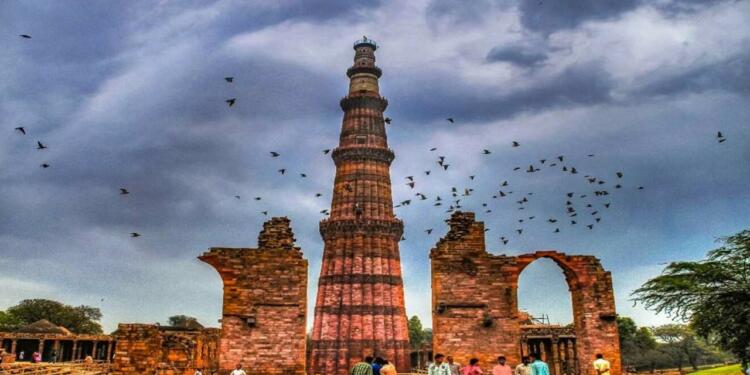Truth of Qutub Minar: Someone has rightly said, “Truth is like a seed of a tree, no matter how much you bury it, one day it comes out.” In the same way, no matter how much some people try to erase or bury some chapters of history, it is impossible for all its remains to be completely destroyed.
In this article, we explore some of the unsolved mysteries and truth of Qutub Minar and its complex, and why it may not be the product of the Turkish Sultanate.
Truth of Qutub Minar
One of the most magnificent creations of Delhi is the Qutub Minar located in Mehrauli, which is visited by people from all corners of the world every year. But when and how was it built? It is said that Qutbuddin Aibak, the first Muslim ruler of Delhi, inspired by the Minaret of Jam located in Afghanistan and with the desire to surpass it, started building it in 1193, but could only complete its base.
His successor Iltutmish extended three storeys to it, and in 1368, Firoz Shah Tughlaq built the fifth and last storey. The tower is made of red sandstone, on which fine carvings of Quranic verses and flower vines have been done. Qutub Minar is the tallest minaret in India made of red and buff sandstone. Built in the 13th century, this imposing tower stands in the capital, Delhi. Its diameter is 14.32 m at the base and about 2.75 m near the top at a height of 72.5 m.
Alai Minar is also located at a short distance from it, which was built by Alauddin Khilji. It was originally supposed to be twice the size of the Qutub Minar, both in length and width, but Alauddin Khilji passed away in 1316 before even half of its construction was completed.
Also read: Lokmanya Bal Gangadhar Tilak – Respected by all, revered by all
Sanatani complex
But there is some difference here. Many believe that the Qutub Minar was never a product of the Turkish Sultanate. This was a Sanatani complex, which was destroyed by the followers of the Sultanate and built their own.
You may think how this is possible, but there are some such facts, which make it clear that something is definitely wrong. First of all, in all the pre-Mughal Islamic buildings, the use of red sandstone was almost negligible, and such construction was more common only in Sanatani states, especially in the provinces of Rajputs. If you don’t believe this, just pay attention to the design of Alai Minar.
Apart from this, most of the rulers of the Turkish Sultanate had only two things to do: either to indulge in looting and massacre, or to expand the state. They didn’t have any special time for things like building construction. Just look at the Adhai Din Ka Jhonpra of Ajmer. To say that it is a mosque, but pay attention to its construction style, then you will understand that it can be an incomplete attempt to demolish a temple and give it the form of a mosque; it cannot be a pure mosque.
Also read: Partition of India-An untold tale
The question
So, it is natural to ask the question: Is Qutub Minar really a part of the Sanatani complex? It is possible, as there is no substantial evidence to disprove it. For example, the Quwwat ul Islam Mosque, located northeast of the minaret, was built during 1198. It consists of an imposing courtyard surrounded by raised figures on carved pillars and is the architectural member of 27 Hindu and Jain temples destroyed by Qutbuddin Aibak, details of which are found in an inscription. In such a situation, how can it be possible that the place where the Qutub Minar complex is located in Mehrauli, there was no place of Sanatan culture?
Support TFI:
Support us to strengthen the ‘Right’ ideology of cultural nationalism by purchasing the best quality garments from TFI-STORE.COM































